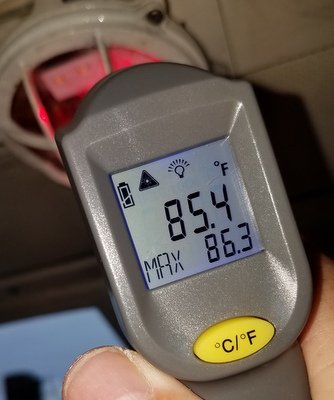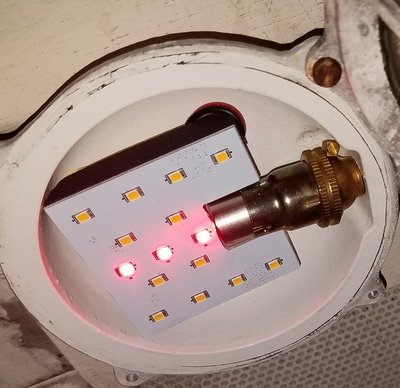wkearney99
Guru
- Joined
- Feb 17, 2018
- Messages
- 2,189
- Location
- USA
- Vessel Name
- Solstice
- Vessel Make
- Grand Banks 47 Eastbay FB
My Eastbay has both AC (fluorescent) and DC lighting in the engine room. My question is if I'm going to replace them with LEDs do I need to continue to have AC units?
I'm thinking that in 2005 they used the AC lights to provide a LOT more lighting than DC units could provide at the time. With modern LEDs that's less of a problem. There's a lot more options now for LEDs that use DC, in all kinds of form-factors. That and all of the LEDS now use considerable less wattage for the same amount of light.
My question is should I even bother continuing to have the existing fluorescent fixtures powered by AC? A simple solution would be to get some LED replacements designed to fit like the fluorescent tubes. Most of those require bypassing the AC ballast, which is not difficult. I've done that in some basement light fixtures and that works fine. But unlike the house, the boat has 12vdc everywhere, so should I even bother keeping the AC lighting active? Should I just bring 12vdc to their fixture and convert them to DC?
Or just remove the AC fixtures entirely and replace them with DC LED units?
I get there's some value to redundancy, but if I've lost 12vdc power and need engine room lighting what's the likelihood I'm going to be able to start the generator to get AC power for them? Seems like switching to all DC and decommissioning the AC engine room lighting is a better plan.
I'm thinking that in 2005 they used the AC lights to provide a LOT more lighting than DC units could provide at the time. With modern LEDs that's less of a problem. There's a lot more options now for LEDs that use DC, in all kinds of form-factors. That and all of the LEDS now use considerable less wattage for the same amount of light.
My question is should I even bother continuing to have the existing fluorescent fixtures powered by AC? A simple solution would be to get some LED replacements designed to fit like the fluorescent tubes. Most of those require bypassing the AC ballast, which is not difficult. I've done that in some basement light fixtures and that works fine. But unlike the house, the boat has 12vdc everywhere, so should I even bother keeping the AC lighting active? Should I just bring 12vdc to their fixture and convert them to DC?
Or just remove the AC fixtures entirely and replace them with DC LED units?
I get there's some value to redundancy, but if I've lost 12vdc power and need engine room lighting what's the likelihood I'm going to be able to start the generator to get AC power for them? Seems like switching to all DC and decommissioning the AC engine room lighting is a better plan.





